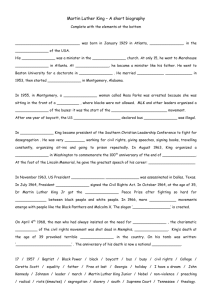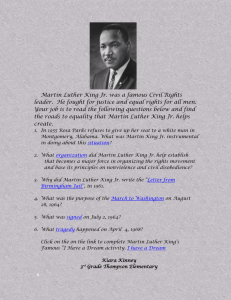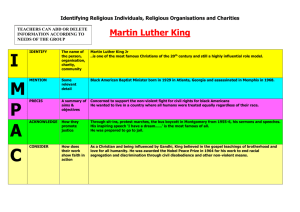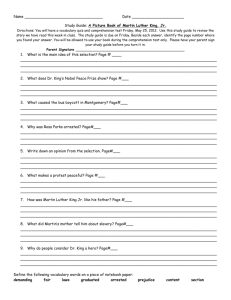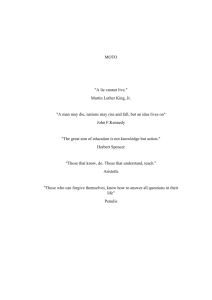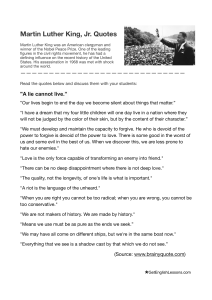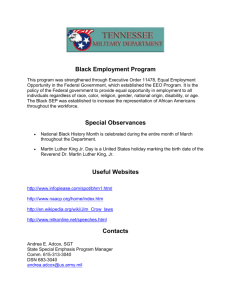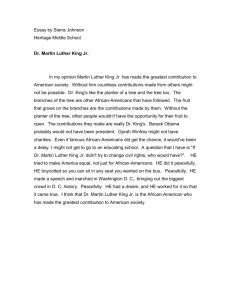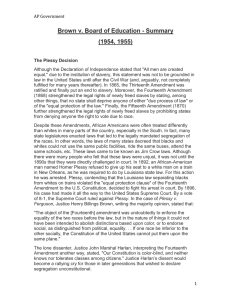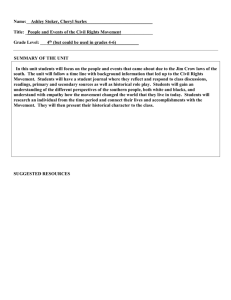Jim Crow Timeline Activity Cards Answer Key These activity cards
advertisement
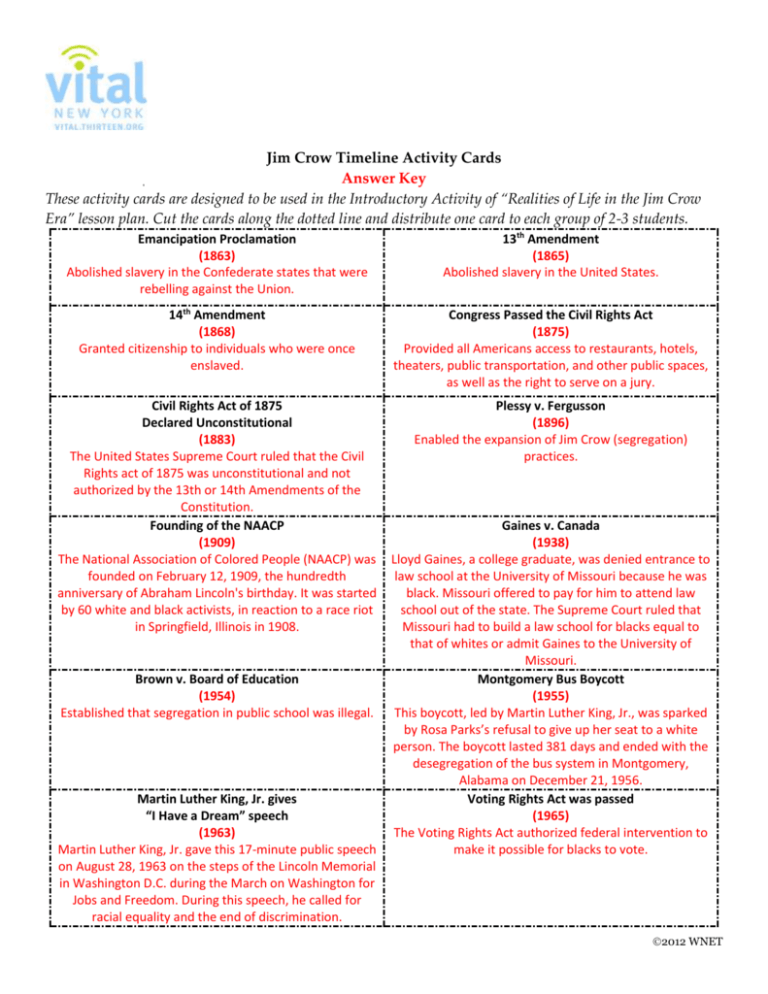
Jim Crow Timeline Activity Cards Answer Key These activity cards are designed to be used in the Introductory Activity of “Realities of Life in the Jim Crow Era” lesson plan. Cut the cards along the dotted line and distribute one card to each group of 2-3 students. Emancipation Proclamation (1863) Abolished slavery in the Confederate states that were rebelling against the Union. 13th Amendment (1865) Abolished slavery in the United States. 14th Amendment (1868) Granted citizenship to individuals who were once enslaved. Congress Passed the Civil Rights Act (1875) Provided all Americans access to restaurants, hotels, theaters, public transportation, and other public spaces, as well as the right to serve on a jury. Civil Rights Act of 1875 Declared Unconstitutional (1883) The United States Supreme Court ruled that the Civil Rights act of 1875 was unconstitutional and not authorized by the 13th or 14th Amendments of the Constitution. Founding of the NAACP (1909) The National Association of Colored People (NAACP) was founded on February 12, 1909, the hundredth anniversary of Abraham Lincoln's birthday. It was started by 60 white and black activists, in reaction to a race riot in Springfield, Illinois in 1908. Plessy v. Fergusson (1896) Enabled the expansion of Jim Crow (segregation) practices. Brown v. Board of Education (1954) Established that segregation in public school was illegal. Martin Luther King, Jr. gives “I Have a Dream” speech (1963) Martin Luther King, Jr. gave this 17-minute public speech on August 28, 1963 on the steps of the Lincoln Memorial in Washington D.C. during the March on Washington for Jobs and Freedom. During this speech, he called for racial equality and the end of discrimination. Gaines v. Canada (1938) Lloyd Gaines, a college graduate, was denied entrance to law school at the University of Missouri because he was black. Missouri offered to pay for him to attend law school out of the state. The Supreme Court ruled that Missouri had to build a law school for blacks equal to that of whites or admit Gaines to the University of Missouri. Montgomery Bus Boycott (1955) This boycott, led by Martin Luther King, Jr., was sparked by Rosa Parks’s refusal to give up her seat to a white person. The boycott lasted 381 days and ended with the desegregation of the bus system in Montgomery, Alabama on December 21, 1956. Voting Rights Act was passed (1965) The Voting Rights Act authorized federal intervention to make it possible for blacks to vote. 2012 WNET Thurgood Marshall was sworn into the Supreme Court (1967) In October 1967, civil rights lawyer Thurgood Marshall was sworn in as the 96th Justice and the first African American Justice on the Supreme Court. Martin Luther King, Jr. was assassinated (1968) Martin Luther King, Jr. was assassinated on April 4, 1968 in Memphis, Tennessee. Escaped convict, James Earl Ray, was arrested for the crime. Some of the information featured in this answer key has been gathered from the following sources: http://www.pbs.org/wnet/jimcrow/stories_events.html http://www.ushistory.org/more/timeline.htm http://www.dailymail.co.uk/news/article-1083408/TIMELINE-The-African-American-civil-rights-movement-slave-market-White-House.html 2012 WNET

